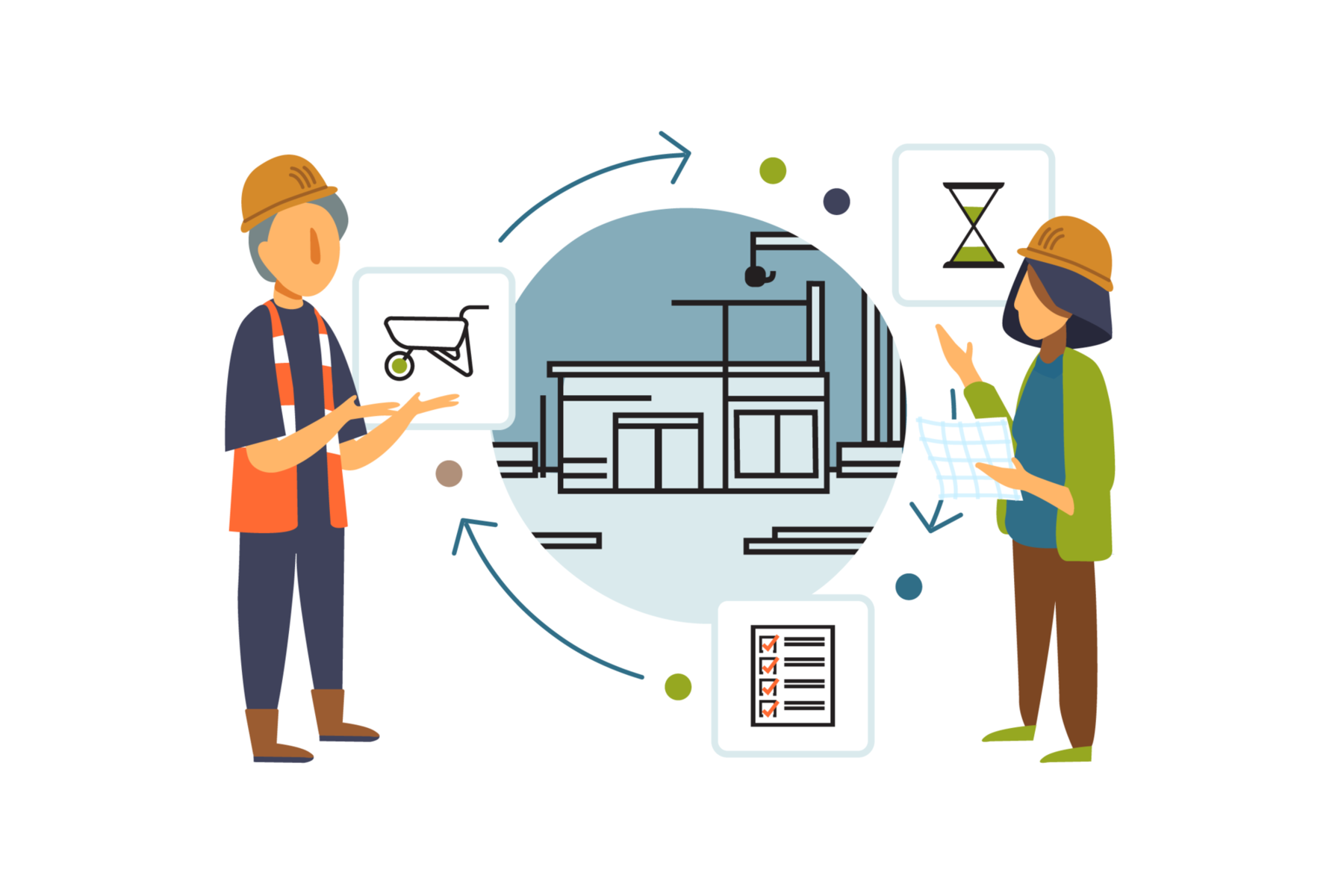Facilities projects are incredibly complex and can span years over planning, design, and construction phases. So many moving pieces over time create sources of waste. Left unchecked, this can mean wasted time, wasted materials, and ultimately wasted money.
This is why we proactively identify and eliminate waste, and the integrated nature of our design-build process is instrumental in this effort. We bring all project participants on board from the start. They collaborate and share information beyond the project phase barriers that break up a traditional project. This informs our design and project teams so that we can identify source of risk and waste as early as possible.
Identify Sources of Waste
In Lean project management there is a concept called Mura. Mura is irregularity or unevenness, and in a complex project this is the key generator of waste. With so many interdependent processes happening both sequentially and in parallel, waste in one area can cascade to others.
Evenness and predictability allow project managers to take up slack in a project, to eliminate idle time and coordinate construction activities with confidence. And when issues arise, it’s important to know the impact they will have on other areas of the project so that the plan and schedule can be adjusted accordingly.
Waste can also come from material and labor availability not being aligned with the design. If a material chosen during design has a lead time a few months longer than its install date, this is going to disrupt the schedule. Or if the design calls for a nine-foot wall that will be framed with ten-foot 2x4s, there will be a dumpster filled with wasted one-foot pieces of wood.
Knowledge sharing among the team helps both the design and project teams identify and account for sources of risk and waste in design, scheduling, and procurement. Capturing this information and transforming into an actionable plan is the key to delivering better projects.
Track All the Moving Parts
Much like the credit union industry has undergone a major digital transformation, our project team has built an innovative new project management process based on collaborative technology platforms and radical transparency.
When our project managers build a project schedule, they make a full accounting of the work that needs to be done with input from all participants. Then they break this work down into the smallest possible discrete tasks and build out the project schedule in Smartsheet. The timeline is informed by information gathered from vendors and subcontractors early on. Rather than a static list of tasks, this schedule is built on dependency and predecessor relationships between tasks.
The value in this is that any risk or impacts to a project can be immediately and accurately propagated through the project and notify every project participant. Everyone, including our clients, has access to this schedule and can see the project status at a glance.
This means that when an issue arises that creates risk for other areas of the project, every project participant can respond proactively. The earlier a risk can be identified, the less potential waste it will create.
Bad news isn’t like wine, it doesn’t get better with age.” – Bob Saunders, VP of Strategic Partnerships at Momentum
Learn more about how we drove our own digital transformation around project management.
Design for Constructability
Another benefit of collaboration throughout our design-build projects is constructability reviews. Our design team works together with the project team, vendors, and subcontractors during the design phase to optimize for constructability.
This means designing with a focus on how the facility will actually be built, factoring in materials, labor, and budget.
In a traditional construction project, a shortage for a certain material or a cost increase on materials or labor might not be uncovered until the design is completed and the project goes out to bid. This can expose the project to risk in the for of higher costs, longer schedules, or last-minute design changes.
Instead of designing in a vacuum, we take advantage of the integrated nature of design-build and loop the project team, vendors, and subcontractors into the process. For example, if 10’ 2x4s are the best available materials and the design originally called for 9’ ceilings, our design team may raise the ceiling to 10’ to reduce waste and improve the final product at no cost to the client.
Make Value-Based Selections
Procurement is another area where we can proactively minimize waste. The lowest bidder is not always the best value, as availability or reliability factors can introduce risk into the project.
This is why we use a value-based selection process that balances cost, quality, and risk to look beyond up-front costs and choose options that provide the best value for our clients.
Learn the Process
Here we’ve covered why predictability and minimizing risk are important goals in a project, but we’ve just scraped the surface of this topic.
If you’d like to jump down the rabbit hole and learn more about both our process and how it can be applied to any project within your own organization, check out our Learn the Process series of articles.

